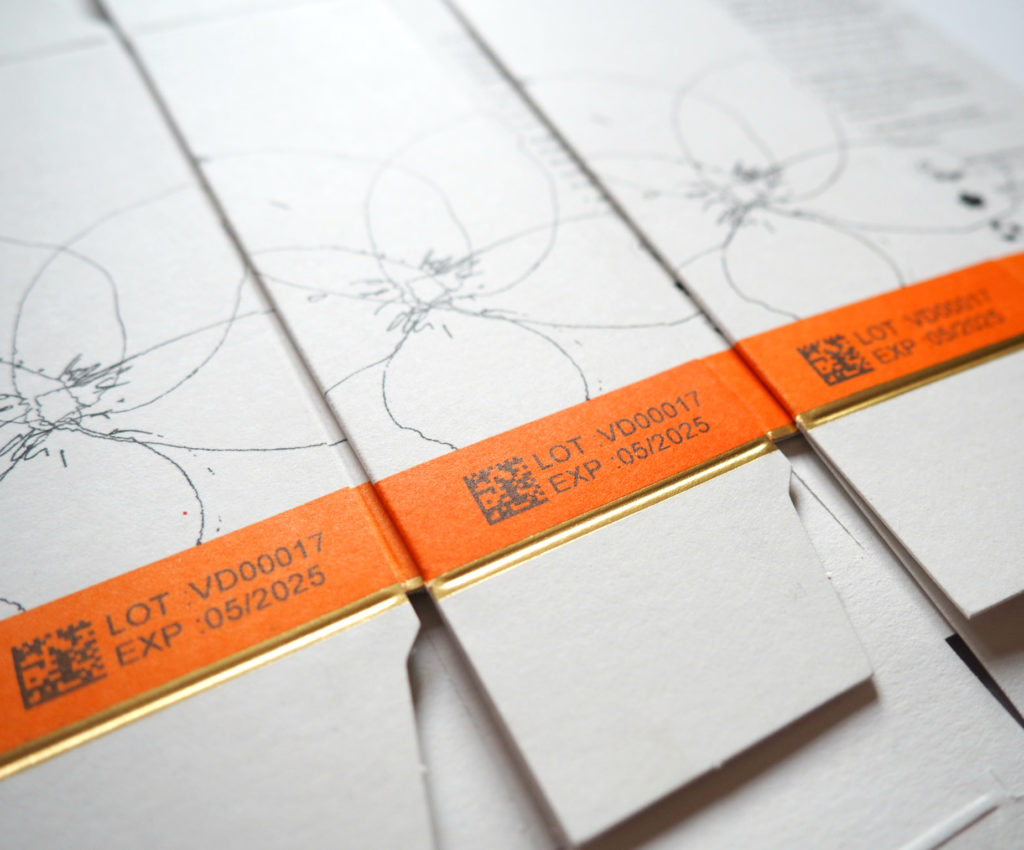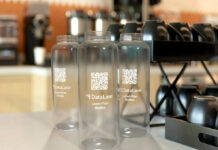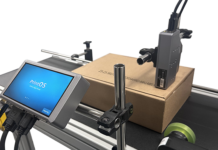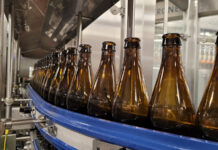
This year, Rotech Machines, the coding integration and feeding systems specialist, celebrates its 20th anniversary. Director Richard Pether looks back through the decades on coding technologies and what lies in store
THE birth of the continuous inkjet printer stretches back to the late 1970s and early 1980s, when the ‘big boys’ in the coding and marking world embarked on the industrial implementation of continuous inkjet (CIJ) technology.
In 1980, when the EEC directive to label perishable goods with a sell-by date came into force, the market for inkjet printers flourished. Engineers of these early printers were striving to develop systems with totally sealed printheads, single button start and stop plus the ability to print up to several lines of text – principles that still hold true today.
Whilst CIJ was born in the 1980s, analogue hot foil coding was established as the technology of choice for applying expiry dates to packs. Coders gave manufacturers the ability to print simple logos and ingredients lists as well as date and batch codes. Hot foil continued to remain popular into the 1990s, until it started to be overtaken by digital technology such as thermal transfer overprinting (TTO) and lasers.
In the noughties thermal inkjet (TIJ) emerged as a serious rival. The main benefits of TIJ stem from the use of ink cartridges – which prevent ink spillages during operation and changeovers but required no maintenance. However they could not accommodate the solvent inks needed to print on non-porous surfaces. Despite shortcomings, the cleanliness and high coding quality advantages of TIJ were important enough to justify investment.
DYNAMIC DEVELOPMENTS
CIJ has done much to shake off its image as messy, temperamental and smelly. Now, decantable consumables have become cartridge based, printheads are self-cleaning, and maintenance intervals are longer.
The barriers that prevented TIJ adoption – chiefly ink performance and equipment cost – have been addressed. R&D has yielded ethanol based inks, enabling printing on a variety of surfaces. Ink performance has also been improved, with high optical darkness and extended de-cap times.
In laser, fibre lasers can mark metals and plastics at high speeds, whilst laser sensitive coatings (thermochromic ink) have revolutionised the way large companies with multiple SKUs achieve high quality code on outer case packaging.
In TTO, ribbon-save features that minimise the gap between prints and reduce ribbon use and increased heat control to the thermal bars for more consistent print quality have been two areas for development.
The latest coding technologies feature intuitive user interfaces that reduce the potential for operator errors. They are designed to be part of a factory network, for example, code data can be updated via a centralised database and printer performance can be monitored.
THE NEXT 20 YEARS
Looking ahead, a number of macro-trends will drive further developments in coding:
Manufacturers: pushing for productivity
Maximising productivity will continue to be a target, with food manufacturers in particular looking to reduce costs in any area they can to offset increases in raw material costs. This will mean more focus on total cost of ownership (TCO) and overall equipment effectiveness (OEE) models. Tomorrow’s technology will have to be accountable and able to demonstrate productivity gains.
Industry 4.0 will play a major role, coding equipment software will evolve to enable manufacturers to harness the opportunities offered by cyber-physical connectivity. Software might cross-check the working condition and performance of the coder and recommend preventative maintenance.
Brand owners: seeking protection
Intensifying competition will see brand owners fiercely protecting their brands. The threat posed by counterfeit copies will drive the wider adoption of serialised and unique codes. Greater importance will be placed on product recall prevention with the use of systems that are easy to use by unskilled operators. Manufacturers will move away from at-printer controls and towards systems that can be controlled remotely through mobile devices and web apps.
Regulators: keeping the pressure on
Sustainability will continue to be high on the agenda. The coding industry will need to respond by making equipment more energy efficient, reducing fluid consumption, removing heavy metals and solvents from inks, developing ‘green’ inks and ensuring codability of biodegradable materials. Further regulation in the area of traceability is expected, creating a requirement for more sophisticated coding methods such as serialisation down to unit pack.
FUTURE FORECASTS
Whilst CIJ is the most common technology employed on lines, the trends outlined above are expected to drive the adoption of non-continuous laser and TIJ technologies at the expense of CIJ systems. It is difficult to say precisely how coding systems will change in the next 20 years, but internet and wireless technologies are bound to have a major influence on equipment development.













